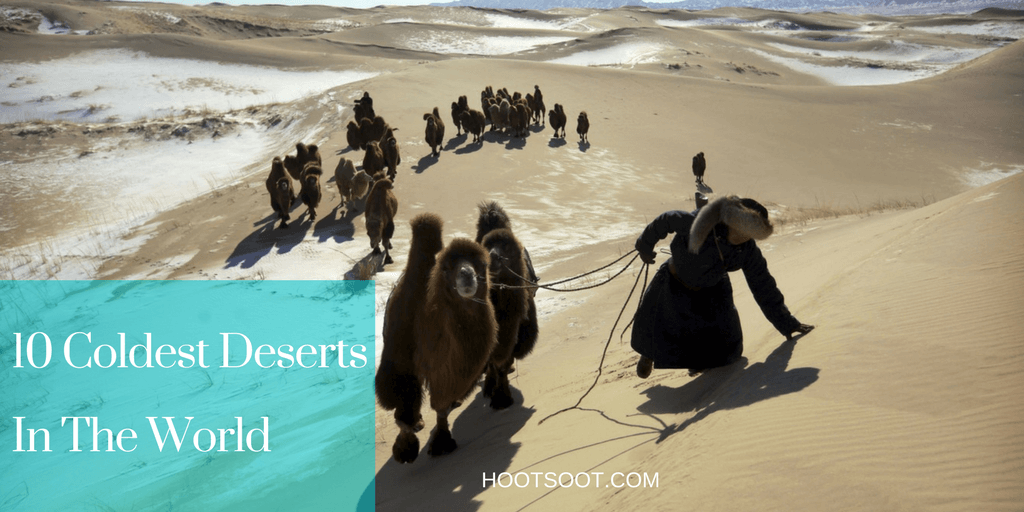
When the term “desert” is uttered, our minds typically conjure images of scorching heat, vast stretches of sand, and camel caravans traversing endless dunes. The mere thought of such a landscape during the blistering heat of summer feels almost criminally uncomfortable. Yet, nature, in its infinite diversity, provides alternatives and surprises. Contrary to the stereotypical hot desert, there exists a category of deserts that defy expectations – the “coldest deserts.” These icy landscapes, shrouded in snow and frigid temperatures, paint a starkly different picture from the traditional desert imagery. In this exploration of nature’s extremes, we unveil a captivating list of the ten most remarkable coldest deserts across the globe, showcasing the beauty and resilience of life in some of the harshest environments on Earth. From the Arctic tundra to high-altitude plateaus, these frozen deserts stand as testaments to the versatility of the term “desert” and challenge our preconceived notions of arid landscapes.
We have come up with a list of the 10 magnificent coldest deserts in the world.
Here is the list of the top 10 world’s coldest deserts you need to visit in summer season to beat the heat.
1. Greenland
Greenland is the world’s largest non- continental and coldest desert, lying in the North Atlantic Ocean. It is famous for having the largest national park in the world, the Northeast Greenland National Park. Temperature of Greenland remains between 7.78°-3.88° Celsius. At 70%, Greenland has one of the highest shares of renewable energy in the world, mostly coming from hydro-power.

2. Gobi
In Asia, Gobi covers the area of Mongolia as well as southern and western part of China. Being situated on the enormous plateau, high altitude is one of the major factors for its cold temperature. The seasonal temperature that changes on the land is due to Serbian moves.

3. Arctic
Arctic circumscribes the North Pole of the world and extends into several regions including Alaska, Canada, Greenland, Iceland, Norway, Finland, Sweden, and Russia. The Arctic region is a unique area among Earth’s ecosystems. The cultures in the region and the Arctic indigenous peoples have adapted to its cold and extreme conditions. Life in the Arctic region includes zooplankton and phytoplankton, fish and marine mammals, birds, land animals, plants and human societies.

4. Great Basin
The Great Basin is the largest area of contiguous endorheic watersheds in North America. It is the accommodation for several basins like Chalfant, Hammil, and Queen valleys. This is the largest desert of the US and lies between the rain shadow of the Sierra Nevada snowy mountain range.

5. Namib
Namib is located in southern Africa and is known for its cold temperature. The reason behind cold temperature is its location along the coast of Benguela current. The interesting fact about it is that many shipwrecks can be found up to 50 meters inland ascribed to the movement of the desert.

6. Turkestan
The desert lies in the region of central Asia between Ural and Siberia to the north; the Gobi Desert to the east; Tibet, Kashmir, Afghanistan, and Iran to the south; and the Caspian Sea to the west. Turkish people used to live here. The cold desert is also home to gerbils, tortoises, and gazelles.

7. Antarctica
Antarctica is considered as the driest, windiest and coldest continent in the world. It contains the geographic South Pole and is situated in the Antarctic region of the Southern Hemisphere, almost entirely south of the Antarctic Circle, and is surrounded by the Southern Ocean. In fact, the world’s coldest temperature was recorded at Vostok Station in 1983 . The reason behind its weather is landmass elevation and ocean temperatures.

8. Atacama
The Atacama is a desert plateau in South America covering a 1,000 km strip of land on the Pacific coast, west of the Andes Mountains. It is considered as the driest and non-polar desert in the world. It is also noticed that the Atacama desert has been described as very similar to Mars’ surface.

9. Iranian
The Iranian desert is famous for its marshes and seasonal lakes due to the runoff from nearby mountains. Sand storm is very common in this area and can form mound that reach up to 40 meters in height.

10. Taklamakan
The Taklamakan desert lies within the rain shadow of Himalayas, is a desert in Southwestern Xinjiang in Northwest China. It is bounded by the Kunlun Mountains to the south, the Pamir Mountains to the west, the Tian Shan range to the north, and the Gobi Desert to the east. There are claypan dotted throughout the area which gave rise to oasis towns when merchant caravanette travelled the Silk Road.

Watch the video:
Fore more such interested post check here – Hootsoot Travel Posts
Comments
- Advertisement -

